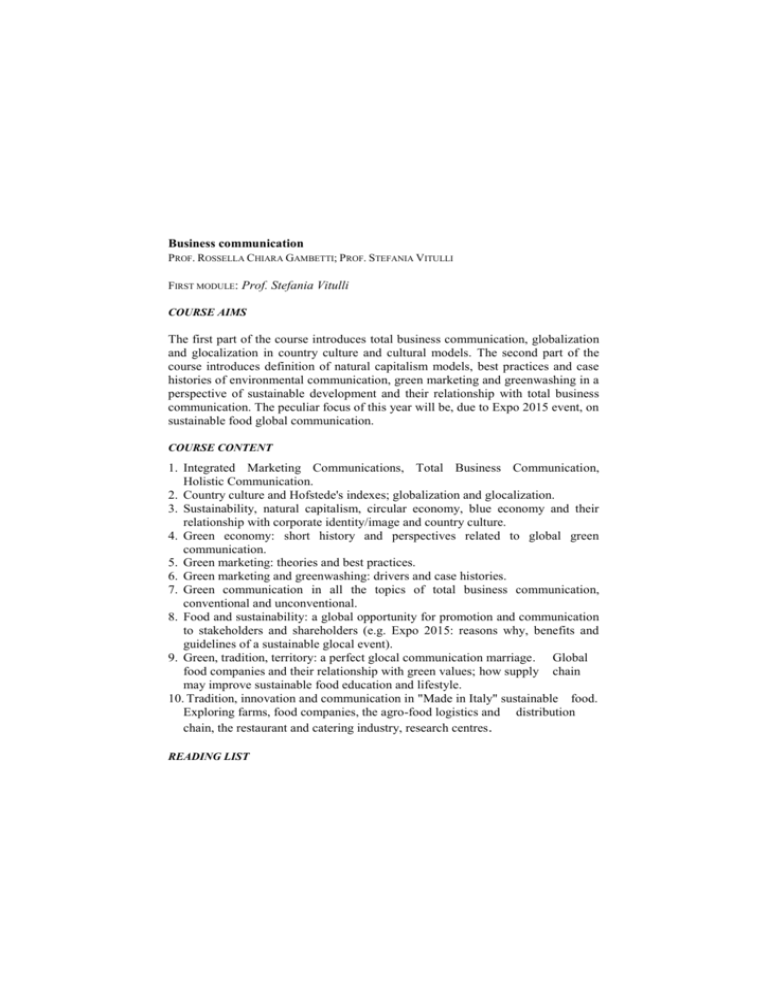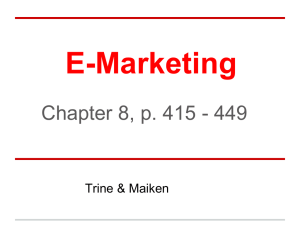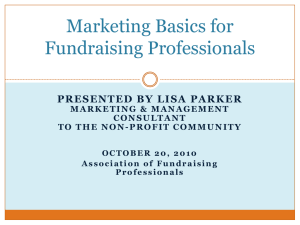
Business communication
PROF. ROSSELLA CHIARA GAMBETTI; PROF. STEFANIA VITULLI
FIRST MODULE: Prof. Stefania Vitulli
COURSE AIMS
The first part of the course introduces total business communication, globalization
and glocalization in country culture and cultural models. The second part of the
course introduces definition of natural capitalism models, best practices and case
histories of environmental communication, green marketing and greenwashing in a
perspective of sustainable development and their relationship with total business
communication. The peculiar focus of this year will be, due to Expo 2015 event, on
sustainable food global communication.
COURSE CONTENT
1. Integrated Marketing Communications, Total Business Communication,
Holistic Communication.
2. Country culture and Hofstede's indexes; globalization and glocalization.
3. Sustainability, natural capitalism, circular economy, blue economy and their
relationship with corporate identity/image and country culture.
4. Green economy: short history and perspectives related to global green
communication.
5. Green marketing: theories and best practices.
6. Green marketing and greenwashing: drivers and case histories.
7. Green communication in all the topics of total business communication,
conventional and unconventional.
8. Food and sustainability: a global opportunity for promotion and communication
to stakeholders and shareholders (e.g. Expo 2015: reasons why, benefits and
guidelines of a sustainable glocal event).
9. Green, tradition, territory: a perfect glocal communication marriage. Global
food companies and their relationship with green values; how supply chain
may improve sustainable food education and lifestyle.
10. Tradition, innovation and communication in "Made in Italy" sustainable food.
Exploring farms, food companies, the agro-food logistics and distribution
chain, the restaurant and catering industry, research centres.
READING LIST
J. RANDERS, 2052: A Global Forecast for the Next Forty Years, Chelsea Greeen Pub Co, Vermont,
2012.
M. POLLAN, Omnivore's Dilemma, Penguin Press, New York, 2006 (specifical chapters will be
indicated).
A list of references focused on environmental communication, green marketing and
sustainable peculiar topics will be indicated during the course. Slides, readings and
essays will be available online.
TEACHING METHOD
This course is expected to be highly interactive. Students are expected to proactively
contribute to class discussion and to the building of concepts step by step by means of
individual and group assignments, with role playing in case study analysis, essays writing
and presentation, and group discussions.
Presentation of case studies by guest speakers
A list of references focused on green marketing, sustainable processes, sustainable food
trends, dietary scenarios and italian case histories to be read, discussed and studied will be
indicated during the course.
ASSESSMENT METHOD
Final written exam, evaluation of individual and group assignments presentations, class
participation.
SECOND MODULE: Prof. Rossella Chiara Gambetti
COURSE AIMS
The course is aimed at analysing the brand concept and the basic dimensions
related to branding from a communicational perspective, with a particular focus on
innovative branding strategies carried out by companies to engage consumers in
longlasting relationships with their brands.
COURSE CONTENT
The brand and the innovative branding strategies towards consumer-brand
engagement
1. The concept of brand, its evolutionary features, its basic advantages offered to
consumers and companies.
2. Brand positioning and brand equity.
3. Consumer-brand engagement and consumer touch-points.
4. Innovative branding strategies:
– Experiential branding.
– Branded entertainment.
– Brand as a social platform: brand communities and beyond.
– Unconventional branding: ambient and guerrilla marketing communication.
READING LIST
For attending students
J.J. BRAKUS-B.H. SCHMITT-L. ZARANTONELLO, Brand experience: what is it? How is it measured?
Does is it affect loyalty?, Journal of Marketing, 73, 2, 2009, pp. 52-68.
L.P. CARBONE-S.H. HAECKEL, Engineering customer experience. Marketing Management, 3, 3, 1994,
pp. 9-19.
A.F. FIRAT-C.J. SHULTZ, From segmentation to fragmentation. Markets and marketing strategy in the
postmodern era, European Journal of Marketing, 31, 3-4, 1997, pp. 183-207.
A.F. FIRAT-A. VENKATESH, Liberatory postmodernism and the re-enchantment of consumption,
Journal of Consumer Research, 22, 3, 1995, pp. 239-266.
R.C. GAMBETTI, Ambient communication: how to engage consumers in urban touchpoints.
California Management Review, 52, 3, 2010, pp. 34-51.
R.C. GAMBETTI-G. GRAFFIGNA-S. BIRAGHI, Grounded theory approach to consumer-brand
engagement: practitioners’ standpoint, International Journal of Market Research, 54, 5, 2012,
pp. 659-687.
C. HACKLEY-R. TIWSAKUL, Entertainment marketing and experiential consumption, Journal of
Marketing Communications, 12, 1, 2006, pp. 63-75.
E.C. HIRSCHMAN-M.B. HOLBROOK, Hedonic consumption: emerging concepts, methods and
propositions, Journal of Marketing, 46, 2, 1982, pp. 92-101.
M.B. HOLBROOK-E.C. HIRSCHMAN, The experiential aspects of consumption: consumer fantasies,
feelings and fun, Journal of Consumer Research, 9, 3, 1982, pp. 132-140.
A.M. MUNIZ-T. O’GUINN, Brand community, Journal of Consumer Research, 27, 4, 2001, pp. 412432.
C.K. PRAHALAD-V. RAMASWAMY, Co-opting customer competence. Harvard Business Review, 78, 1,
2000, pp. 79-87.
B.H. SCHMITT, Experiential marketing. Journal of Marketing Management, 15, 1999, pp. 53-67.
S. WHELAN-M. WOHLFEIL, Communicating brands through engagement with ‘lived’ experiences.
Journal of Brand Management, 13, 4-5, 2006, pp. 313-329.
For non-attending students
Books
E.T. BRIOSCHI-H. KOBAYASHI, A comparative study in business communication. Integrated marketing
communication, total business communication, Koukoku, Vita e Pensiero, Milano, 2008.
R. GAMBETTI-S. QUIGLEY, Managing corporate communication: a cross-cultural approach, Palgrave
MacMillan, London, 2012 (Chapters 1, 2, 4, 5, 6, 9, 10, 12, 13, 14, 18, 19 and 20).
Articles
L.P. CARBONE-S.H. HAECKEL, Engineering customer experience. Marketing Management, 3, 3, 1994,
pp. 9-19.
R.C. GAMBETTI, Ambient communication: how to engage consumers in urban touchpoints,
California Management Review, 52, 3, 2010, pp. 34-51.
R.C. GAMBETTI-G. GRAFFIGNA-S. BIRAGHI, Grounded theory approach to consumer-brand
engagement: practitioners’ standopoint, International Journal of Market Research, 54, 5, 2012,
pp. 659-687.
C. HACKLEY-R. TIWSAKUL, Entertainment marketing and experiential consumption, Journal of
Marketing Communications, 12, 1, 2006, pp. 63-75.
M.B. HOLBROOK-E.C. HIRSCHMAN, The experiential aspects of consumption: consumer fantasies,
feelings and fun, Journal of Consumer Research, 9, 3, 1982, pp. 132-140.
B.H. SCHMITT, Experiential marketing, Journal of Marketing Management, 15, 1999, pp. 53-67.
Optional readings
K.L. KELLER, Strategic brand management: building, measuring and managing brand equity,
Pearson Prentice Hall, Upper Saddle River, 2008.
TEACHING METHOD
Interactive lessons, group assignments and oral presentations.
ASSESSMENT METHOD
Final written exam, evaluation of group assignments, project works, and oral
presentations.
NOTES
It is foreseen a separate evaluation at the end of every module.








